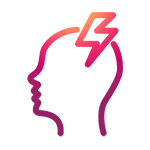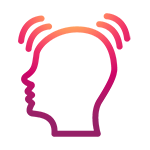What is Encephalitis?

An inflammation of the brain tissue is encephalitis. The most common cause of encephalitis is viral infections. It can also be caused by bacteria or fungi. It is a rare yet serious life threatening disease.
There are two main types of encephalitis: primary and secondary. Primary encephalitis occurs when a virus directly infects the brain and spinal cord. Secondary encephalitis occurs when an infection starts elsewhere in the body and then travels to your brain.
What are the types of Encephalitis?
There are two major types of encephalitis
- Primary – It occurs when a virus directly infects the brain and spinal cord
- Secondary – It occurs when an infection originates elsewhere and spreads to the brain.
What are the symptoms of Encephalitis?
The symptoms of encephalitis can range from mild to severe symptoms. THe disease can present differently in children.
When a blood clot that forms somewhere else in the body ruptures and travels to the brain via the bloodstream. The clot lodges in an artery and clocks blood flow causing a stroke. It is a type of an ischemic stroke. If the artery stays blocked for a while it leads to brain damage.
Mild symptoms










Severe symptoms
Symptoms in children
Encephalitis develops as a result of direct viral infection to the brain. It can also be by a bacteria or a fungus. The immune system of the body might also mistakenly attack the brain tissue.
Primary Encephalitis can be split into three main categories
- Common viruses – HSV (Herpes Simplex Virus) and EBV (Epstein-Barr Virus)
- Childhood Viruses – Measles and Mumps
- Arboviruses – Japanese encephalitis, West Nile Encephalitis and tick-borne encephalitis.
The exact cause of the illness has not been known in most of the encephalitis cases. It is more likely to affect children, older adults, individuals with weakened immune systems and people with exposure to mosquitoes and ticks.
- Age
- Weak immune system
- Geographical region
- Season of the year
Diagnostic tests are conducted to determine the right course of treatment for the disease.
- Brain imaging
- CT Scan
- Spinal Tap
- Cerebrospinal fluid
- EEG
- Samples of blood and urine
- MRI
- Complete bed rest
- Increased fluid intake
- Anti inflammatory drugs
- Supportive care
- Breathing assistance
- Intravenous fluids
- Anti – inflammatory
- Anticonvulsant medications
- Follow up therapy
- Physical therapy
- Occupational therapy
- Speech therapy
- Psychotherapy














